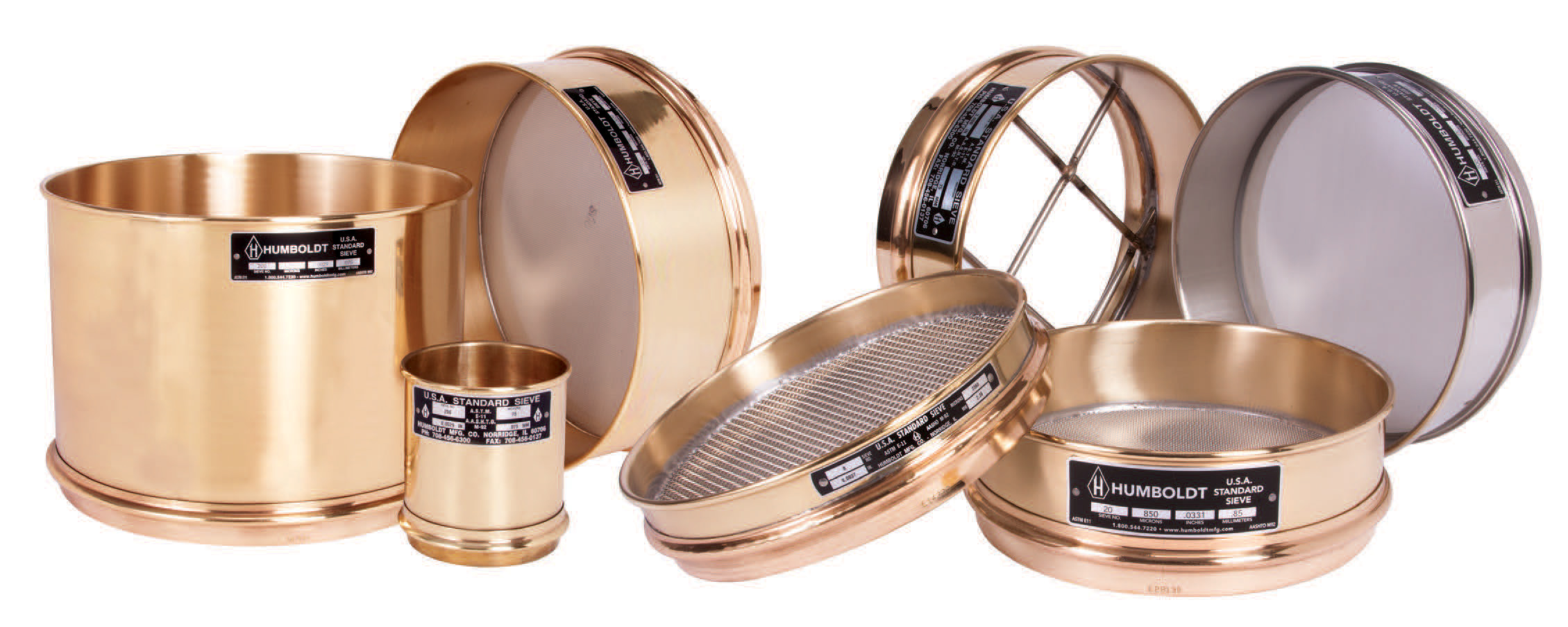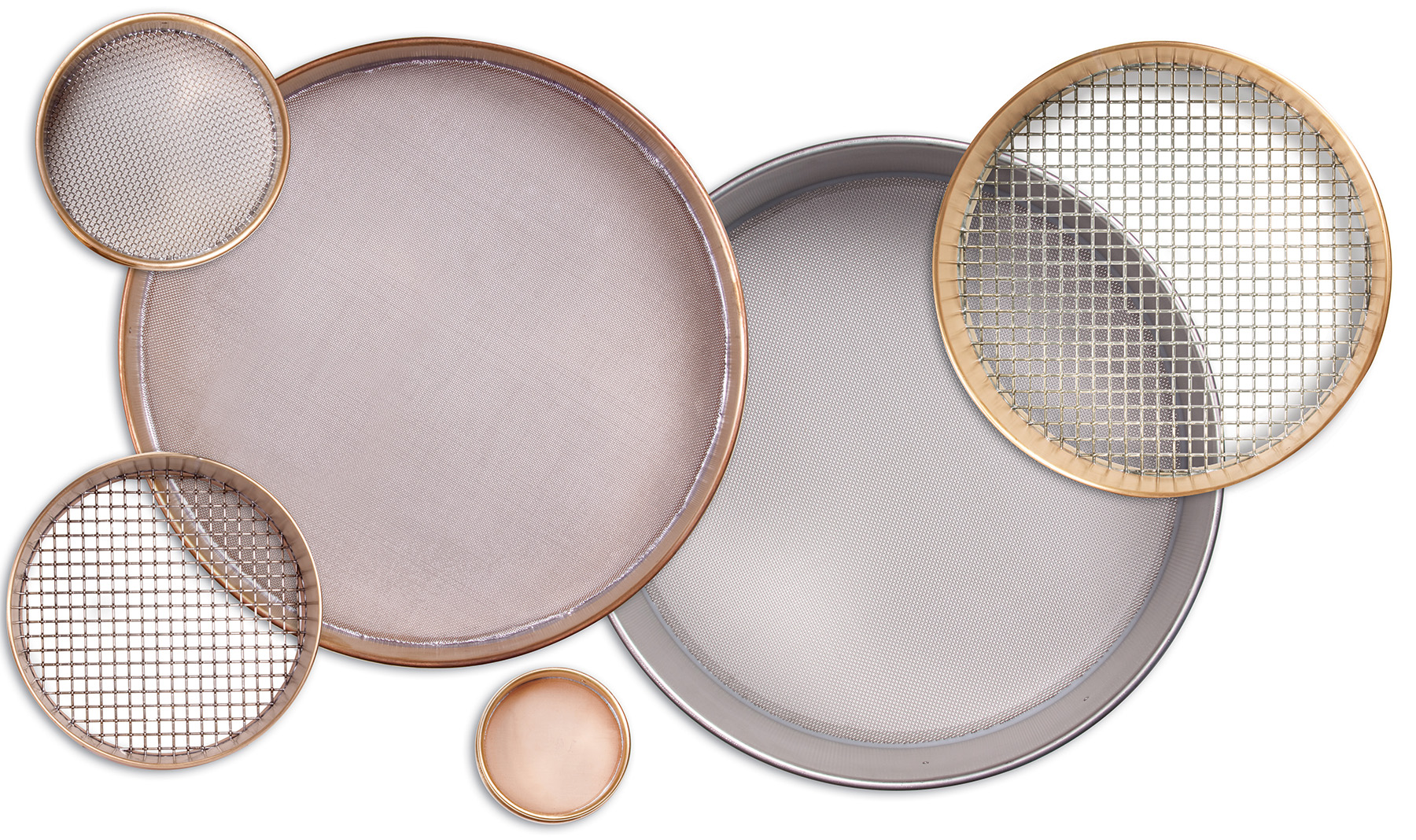Particle Size Analysis Using ASTM Mesh Test Sieves: A Comprehensive Guide
- January 6th, 2025
- Category: Soil & Aggregate Moisture Testing

Particle size analysis is crucial for determining the characteristics of construction materials and various granular substances. In the U.S., the ASTM mesh test sieve is one of the most widely used tools for this analysis. These sieves are integral to assessing material properties such as grading and uniformity, which are essential for various industries, from construction to pharmaceuticals.
In this post, we’ll explore the basics of ASTM mesh test sieves, their components, and how to determine the right sieve sizes for your particle size analysis.
Introduction to Sieves
When performing particle size analysis, sieves serve as the primary means of separating materials based on their particle sizes. While there are numerous types of sieves, ASTM mesh test sieves are among the most commonly used for construction materials in the United States. These sieves typically consist of a shallow cylindrical metal frame with a woven-wire mesh screen, designed to separate particles based on their size.

What Are ASTM Mesh Test Sieves?
An ASTM sieve generally consists of a metal frame (typically made of brass or stainless steel) with a mesh screen woven from wire. The screen’s mesh is made up of square apertures that vary in size, allowing particles of certain sizes to pass through while retaining others. The openings in the mesh are measured in microns (μm) or millimeters (mm) and determine the sieve's size.
The sieves come in a range of mesh sizes, from a nominal opening of 4.00 inches down to a Number 1000 sieve (with a nominal opening of 0.00008 inches, or 2 microns).ecision techniques.
Sieving for Particle Size Distribution
In some cases, particle size analysis may be expressed using two sieve sizes — the largest sieve through which the majority of particles have passed, and the smallest sieve on which the majority of particles are retained. However, for a more comprehensive analysis, it's better to consider the distribution of particle sizes across several sieves. This approach provides a deeper understanding of the material being analyzed.
Why Use Sieves?
Sieving remains one of the most reliable and convenient methods for determining the particle size distribution of a material. The process is simple, fast, and can be done in nearly any location. Whether you are conducting routine quality control checks or performing laboratory research, sieving provides quick and accurate results. It is also easy to scale — from small lab setups to large industrial sieving processes.
Understanding ASTM Sieves
Sieve Diameters and Depths
In the U.S., most sieves used for construction material testing follow ASTM E11 standards and typically come in three common diameters:
- 8-inch sieve (203mm)
- 12-inch sieve (305mm)
While other sizes may be used depending on specific requirements, these are the most common sieve diameters for ASTM testing.
Sieve Depths
12-inch sieves often come in both standard and "half-height" frames, while 18-inch sieves tend to have depths of around 4.5 inches. These depth variations help accommodate the volume of material being sieved and can impact the amount of sample you can work with during the analysis.
Mesh Sizes
ASTM mesh test sieves come in a wide variety of mesh sizes, which are defined by the aperture size of the woven wire screen. A sieve’s mesh number (often denoted as "M") corresponds to the number of wires per inch (25.4mm), which directly relates to the number of square openings per inch. This mesh number, combined with the wire diameter and the spacing between the wires, determines the sieve’s aperture width and its overall open area.

Here’s a quick breakdown of how these factors interrelate:
- Mesh Number (M): The number of wires per inch.
- Aperture Width (a): The width of the openings in the wire mesh.
- Wire Diameter (w): The thickness of the wire.
- Open Area (A): The total area through which particles can pass.
These variables are governed by specific equations to calculate the mesh number, aperture width, and open area, ensuring accurate and consistent sieve performance.
Choosing the Right Sieves
When selecting the size and number of sieves for a given particle size analysis, the most important factor is typically the size and material of the sample. The goal is to determine the appropriate sieve sizes that will allow 5% of the sample to pass through the finest sieve while retaining 5% on the coarsest sieve.
Once this range is determined, intermediate sieve sizes can be chosen. In many cases, the intermediate sieve sizes are spaced equally to create a uniform distribution, but sometimes, consecutive sieves are used if specific ranges of material size need to be examined more closely.
Example Mesh Sizes for Specific Ranges
For materials with particle sizes ranging from 710 microns to 180 microns, here are a few examples of mesh sizes commonly used in sieve analysis:
- Option 1: 710, 600, 500, 425, 355, 300, 250, 212, 180
- Option 2: 710, 500, 355, 250, 180
- Option 3: 710, 500, 425, 355, 300, 250, 180
- Option 4: 710, 600, 300, 212, 180
These examples show a range of choices that could be made depending on the type of material being analyzed and the level of detail required in the results.
Types of ASTM Sieves
ASTM sieves come in different grades, each offering varying levels of precision and accuracy. Let’s take a look at the different types available:
1. USA Standard ASTM Test Sieves
These sieves are designed to meet the ASTM E11 and AASHTO M92 standards. They are built to ensure consistent fit and durable construction, and each sieve comes with an individual serial number for traceability. Additionally, each sieve is accompanied by a certificate of manufacturing quality.
2. USA Standard ASTM Inspection Test Sieves
Inspection test sieves are used in situations where accuracy and repeatability are paramount. These sieves undergo an inspection-level verification, ensuring that the number of openings in the sieve is within strict tolerances. They provide a 99% confidence level that the sieve meets the ASTM standards for opening uniformity.
3. USA Standard ASTM Calibration Test Sieves
For applications requiring the highest accuracy, calibration test sieves provide a further layer of verification. These sieves are subjected to an even more rigorous calibration process, ensuring that the openings meet ASTM specifications with a 99.73% confidence level. Calibration test sieves are ideal for highly precise applications, offering the highest level of repeatability.
ASTM mesh test sieves play a vital role in determining the particle size distribution of materials used in construction and other industries. By understanding the different types of sieves, their specifications, and how to select the right sieve sizes for your application, you can ensure that your particle size analysis is accurate and reliable.
Whether you are testing aggregate materials, fine powders, or other granular substances, ASTM sieves offer a simple yet effective method for measuring particle size and ensuring the quality of your materials.

